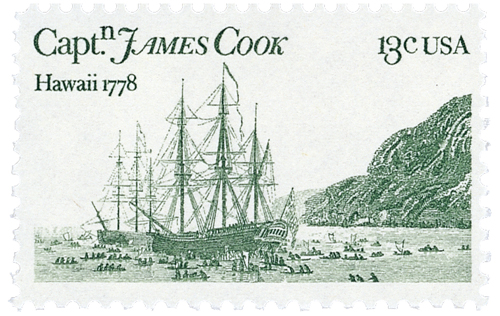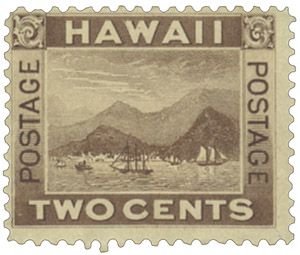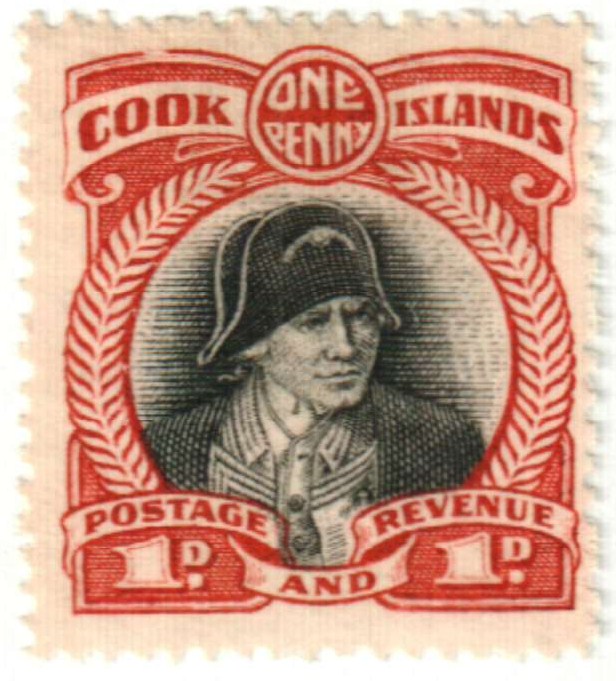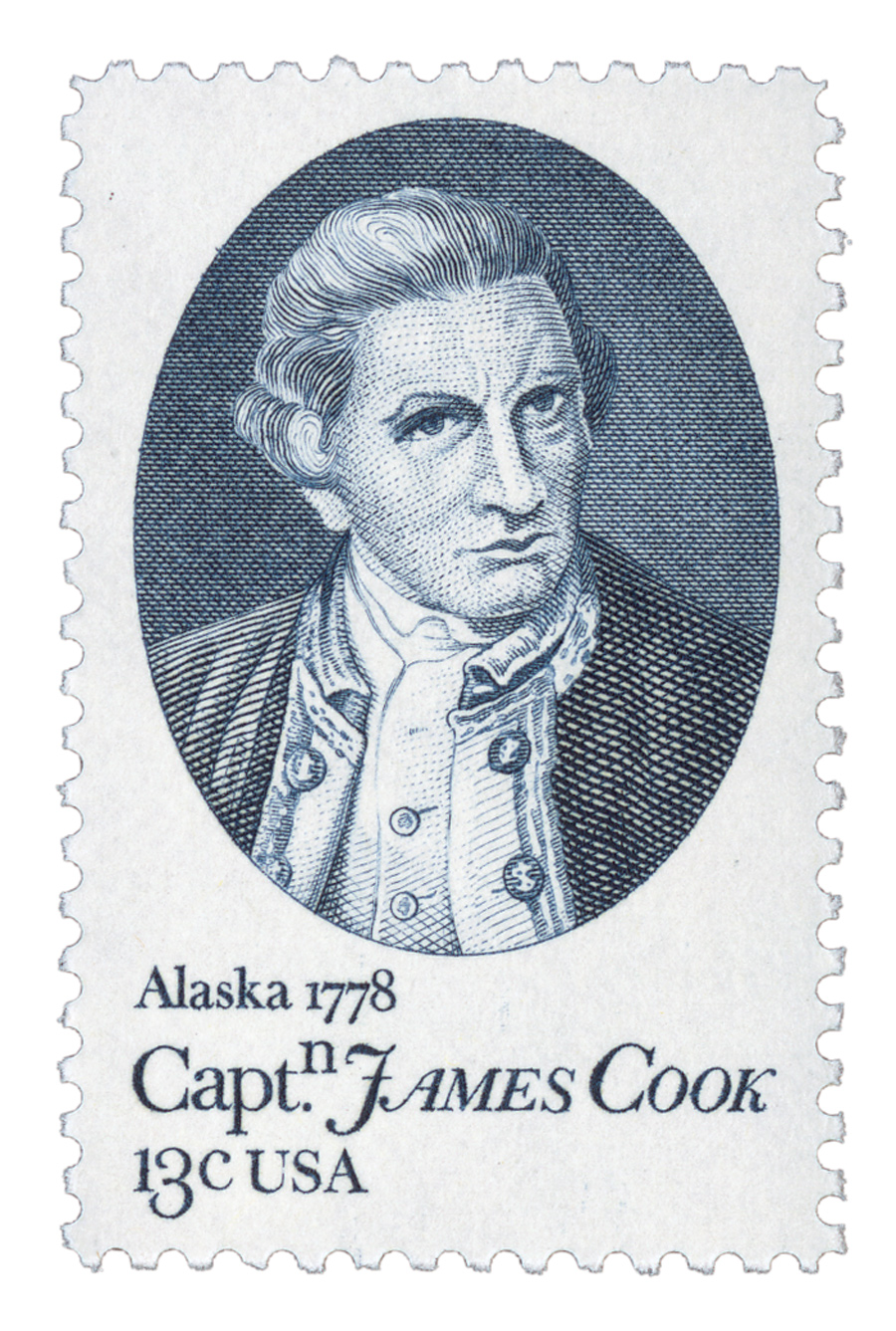
# H75 - 1894 2c Hawaii, brown, View of Honolulu
Hawaii Pictorial Stamps
The Pictorial stamps of Hawaii are among the most attractive ever issued. And they’re a direct tie to the brief history of the Republic of Hawaii.
In 1900, U.S. stamps were distributed to the new territory and the existing Republic of Hawaii stamps were destroyed – making these sought-after stamps even scarcer. This is your chance to get these affordable gems for your collection in postally used condition.
James Cook – First European To Visit Hawaii
About 2,000 years ago, Polynesians journeyed to the Hawaiian Islands using giant sailing canoes. These expert seafarers traveled more than 3,500 miles through rough, open seas that later proved a serious challenge to much larger European sailing vessels. Incredibly, this migration was made without the use of navigational tools.
Although European or Japanese ships may have reached the Hawaiian Islands during the 1500s, Great Britain’s Captain James Cook was responsible for making them known to the rest of the world. One of the world’s greatest explorers, he commanded three Pacific Ocean voyages and sailed around the world twice. Cook began his third and final Pacific voyage in July 1776 with his ships the Resolution and the Discovery.

Cook made the first European landfall in Hawaii on January 18, 1778, and engaged in friendly trade. It’s estimated that about 300,000 people lived in Hawaii at that time. Cook’s arrival in Hawaii coincided with an important festival. Many historians speculate that the islanders believed Cook was fulfilling a Hawaiian legend – the return from their sea god, “Lono.” The Hawaiians believed Cook had divine powers and considered him a great chief. He named the islands in honor of the first lord of the British admiralty, the Earl of Sandwich. Cook left the Sandwich Islands after two weeks.

Cook then sailed north, crossed the Bering Strait and entering the Arctic Ocean. However, large walls of ice forced him to turn back. So he returned to Hawaii in November 1778. Despite their warm welcome, friction soon developed between the crew and the islanders. Perhaps feeding the crew of his two ships was too great a strain on the Hawaiians.
The poor condition of Cook’s ships prevented him from leaving. In February 1779, a Hawaiian stole a boat from the Discovery. While Cook was investigating the theft, a fight broke out between the Hawaiians and Cook’s crew. Cook was stabbed to death during the fight on February 14, 1779.

Cook was respected so greatly that, among many other honors, Russia named an island group near New Zealand after him (the Cook Islands). Perhaps the greatest praise came from Benjamin Franklin, though. As the American Colonies battled Great Britain for independence in the Revolutionary War, battles were often fought at sea. Any ship of the opposing nation was potential prey with one exception – Captain Cook’s ship.
In 1779, Franklin ordered that American ships should “…not consider (Cook’s ship) an enemy, nor suffer any plunder to be made of the effects contained in her, nor obstruct her immediate return to England…but that you treat the said Captain Cook and his people with all civility and kindness…as common friends to mankind.” But at the time of the order, Cook had already been slain in a conflict with Hawaiian natives earlier in the year.
Hawaii Pictorial Stamps
The Pictorial stamps of Hawaii are among the most attractive ever issued. And they’re a direct tie to the brief history of the Republic of Hawaii.
In 1900, U.S. stamps were distributed to the new territory and the existing Republic of Hawaii stamps were destroyed – making these sought-after stamps even scarcer. This is your chance to get these affordable gems for your collection in postally used condition.
James Cook – First European To Visit Hawaii
About 2,000 years ago, Polynesians journeyed to the Hawaiian Islands using giant sailing canoes. These expert seafarers traveled more than 3,500 miles through rough, open seas that later proved a serious challenge to much larger European sailing vessels. Incredibly, this migration was made without the use of navigational tools.
Although European or Japanese ships may have reached the Hawaiian Islands during the 1500s, Great Britain’s Captain James Cook was responsible for making them known to the rest of the world. One of the world’s greatest explorers, he commanded three Pacific Ocean voyages and sailed around the world twice. Cook began his third and final Pacific voyage in July 1776 with his ships the Resolution and the Discovery.

Cook made the first European landfall in Hawaii on January 18, 1778, and engaged in friendly trade. It’s estimated that about 300,000 people lived in Hawaii at that time. Cook’s arrival in Hawaii coincided with an important festival. Many historians speculate that the islanders believed Cook was fulfilling a Hawaiian legend – the return from their sea god, “Lono.” The Hawaiians believed Cook had divine powers and considered him a great chief. He named the islands in honor of the first lord of the British admiralty, the Earl of Sandwich. Cook left the Sandwich Islands after two weeks.

Cook then sailed north, crossed the Bering Strait and entering the Arctic Ocean. However, large walls of ice forced him to turn back. So he returned to Hawaii in November 1778. Despite their warm welcome, friction soon developed between the crew and the islanders. Perhaps feeding the crew of his two ships was too great a strain on the Hawaiians.
The poor condition of Cook’s ships prevented him from leaving. In February 1779, a Hawaiian stole a boat from the Discovery. While Cook was investigating the theft, a fight broke out between the Hawaiians and Cook’s crew. Cook was stabbed to death during the fight on February 14, 1779.

Cook was respected so greatly that, among many other honors, Russia named an island group near New Zealand after him (the Cook Islands). Perhaps the greatest praise came from Benjamin Franklin, though. As the American Colonies battled Great Britain for independence in the Revolutionary War, battles were often fought at sea. Any ship of the opposing nation was potential prey with one exception – Captain Cook’s ship.
In 1779, Franklin ordered that American ships should “…not consider (Cook’s ship) an enemy, nor suffer any plunder to be made of the effects contained in her, nor obstruct her immediate return to England…but that you treat the said Captain Cook and his people with all civility and kindness…as common friends to mankind.” But at the time of the order, Cook had already been slain in a conflict with Hawaiian natives earlier in the year.









